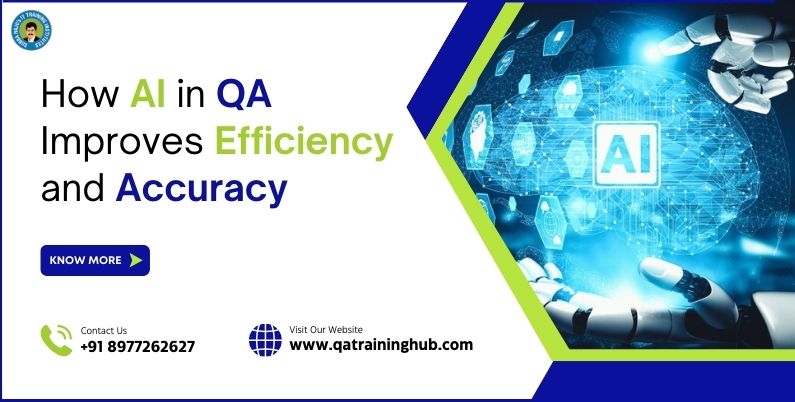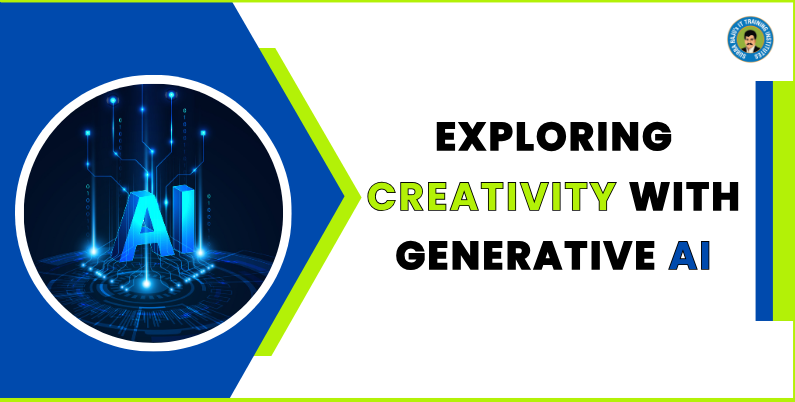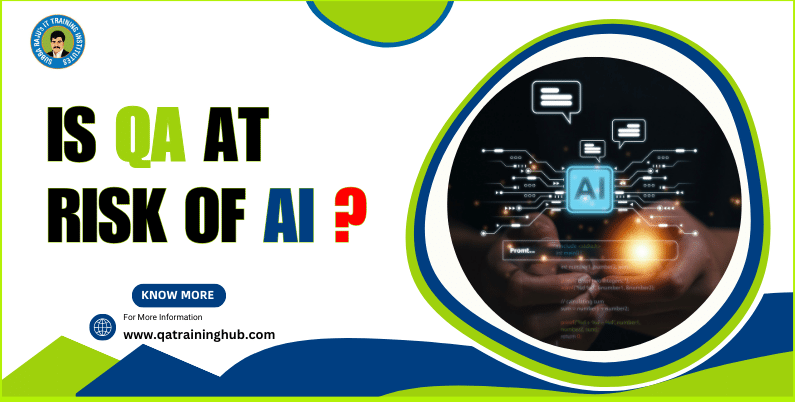
Enhancing Efficiency and Accuracy with AI in QA
The growth of Artificial Intelligence (AI) has changed many industries, including Quality Assurance (QA). In the past, QA involved a lot of manual work, which often caused delays and mistakes. Now, with AI, QA processes have become much more efficient and accurate. This Article will look at How AI in QA Improves Efficiency and Accuracy, including its benefits, uses, and the future of AI in QA
The Need for AI in QA
Quality Assurance is an important part of software development. It makes sure that products meet the required standards and are free of defects. But traditional QA methods often run into problems like:
- Manual Effort: A lot of manual testing can take a long time and is likely to have human errors.
- Scalability Issues: As software projects become more complex, it gets harder to handle QA processes manually.
- Inconsistent Results: Human testers might give inconsistent results because of tiredness or different understandings of test cases.
- Delayed Feedback: Testing by hand can make the feedback process slower, which delays finding and fixing problems.
These challenges show why we need QA processes that are faster and more accurate, leading to the use of AI.
How AI Enhances Efficiency in QA
Automated Test Case Generation:
AI algorithms can create test cases on their own using the software’s requirements and details. This means less time is needed to make test cases, and it covers lots of different situations well. With techniques like natural language processing (NLP), AI can understand requirements written in everyday language and turn them into test cases that can run.
Intelligent Test Execution:
AI tools can decide which test cases to do first and do them better than older ways. They look at past data and find patterns to figure out which tests are most important and likely to have problems. This helps focus testing and find issues faster.
Test Maintenance:
As software changes, maintaining test cases can be a hard task. AI can automatically update and maintain test cases based on changes in the software, reducing the manual effort involved and ensuring that tests remain relevant and effective.
Parallel Testing:
AI allows running many tests at once in various environments and setups. Testing multiple things at the same time makes testing much faster, so we can deliver good software quicker.
Continuous Testing and Integration:
AI-driven testing tools work smoothly with continuous integration and deployment systems. They automatically test code whenever there’s a change, giving instant feedback. This helps catch and fix problems early in development.
How AI Improves Accuracy in QA
Predictive Analytics:
AI can look at past test data to guess where problems might happen in the future. It finds patterns and connections to help testers concentrate on parts of the software that might have big problems. This makes it more likely to find important issues.
Defect Classification and Prioritization:
AI algorithms can sort out and decide which defects are most important based on how severe they are and what they affect. This helps QA teams fix the most serious problems quickly.
Anomaly Detection:
Machine learning models can detect anomalies and unexpected behavior in software systems. These models learn from past data and notice when things aren’t normal. This helps testers find problems that regular testing might not catch.
Enhanced Coverage:
AI tools can make lots of different test cases that look at all kinds of situations, even ones that human testers might not think about, like unusual cases.Testing everything like this makes sure the software works well, which means it’s more likely to be righ
Natural Language Processing (NLP):
NLP helps AI understand human language, so it can look at requirements, user stories, and test cases written in everyday language. This makes sure the tests match what the software is supposed to do and what users expect.
Applications of AI in QA
Regression Testing:
Regression testing ensures that new code changes do not negatively impact existing functionality. AI can make regression testing better by picking the most important tests to run, so testing doesn’t take as long but still works well.
UI/UX Testing:
AI can act like a user to test how the software looks and feels. It looks at how users behave and what they say to find problems and ways to make things better, so everyone has a good experience using the software.
Performance Testing:
AI-powered performance testing tools can pretend to be lots of people using the system and see how it handles different situations. They can find where the system slows down and give ideas on how to make it faster.
Security Testing:
AI can make security testing better by finding weak spots and possible dangers. Algorithms that learn can look for patterns and strange things that might mean someone is trying to break into the software. This helps keep software safe from malicious attacks.
Test Data Management:
Handling test data, especially in big projects, can be hard. AI can make fake test data that looks like real situations, so tests use the right information. This means we don’t need to use real data as much, which keeps it safer and private.
The Future of AI in QA
AI being used in QA is still changing, and there are even more exciting improvements to come in the future:
AI-Driven Code Analysis:
Future AI tools will be able to analyze code more deeply and detect potential issues before they happen. These tools will give developers feedback right away, which will help them write code that’s neater and works better.
Self-Healing Test Automation:
AI will enable self-healing test automation, where test scripts can automatically adapt to changes in the application. This will make it easier for QA teams to keep up with changes and make sure tests keep working well as the software changes.
Collaborative AI:
Collaborative AI systems will improve how human testers and AI tools work together. They’ll use what’s good about both people and machines, making QA more complete.
Enhanced Predictive Capabilities:
As AI algorithms get better, they’ll be more precise at predicting problems. These improved predictions will help QA teams catch issues earlier in development, which means fewer overall mistakes.
AI-Enhanced Exploratory Testing:
AI will help human testers during exploratory testing by giving them instant advice and ideas. Working together like this will make exploratory testing more creative and better at finding problems, making sure the software is tested well from lots of different angles.
Challenges and Considerations
While AI brings many advantages for QA, it also comes with some challenges and things to think about:
Data Quality and Quantity:
For AI algorithms to work well, they need good and enough data. Making sure we have the right data and that it’s correct is really important for AI-driven QA to work properly.
Integration with Existing Tools:
Integrating AI tools with existing QA processes and tools can be complex. Organizations need to ensure seamless integration to maximize the benefits of AI in QA.
Skillset Requirements:
Using AI in QA needs people who know about AI technologies and tools. Companies might have to spend money on training and teaching people the skills they need.
Cost Considerations:
Using AI tools for QA might cost a lot at the beginning. Companies have to think about if the benefits over time and the return on investment (ROI) make it worth using AI in QA.
Ethical and Privacy Concerns:
AI tools might make people worry about ethics and privacy, especially if they’re dealing with private information. Companies need to use AI tools carefully and follow rules and standards to make sure they’re being responsible.
Conclusion:
In conclusion, How AI in QA Improves Efficiency and Accuracy. By using AI tools, companies can make test cases faster, run tests better, and use predictions to find and fix problems early. With advancements like AI analyzing code, tests fixing themselves, and humans and AI working together, the future of QA looks even brighter for making things better and more innovative.
At QA Training Hub, we understand how AI can change QA and we’re dedicated to teaching people the skills they need to succeed in this changing field. Our training programs cover everything from how to use AI in testing to the best ways to do it, so people and companies can make the most of AI in QA. Whether you want to work faster, be more accurate, or stay ahead in the fast-changing world of software testing, QA Training Hub is here to help you succeed.
Experience firsth and how AI in QA improves efficiency and accuracy by joining QA Training Hub today. Let’s work together to embrace the future of software testing with AI and discover new ways to innovate and grow.







